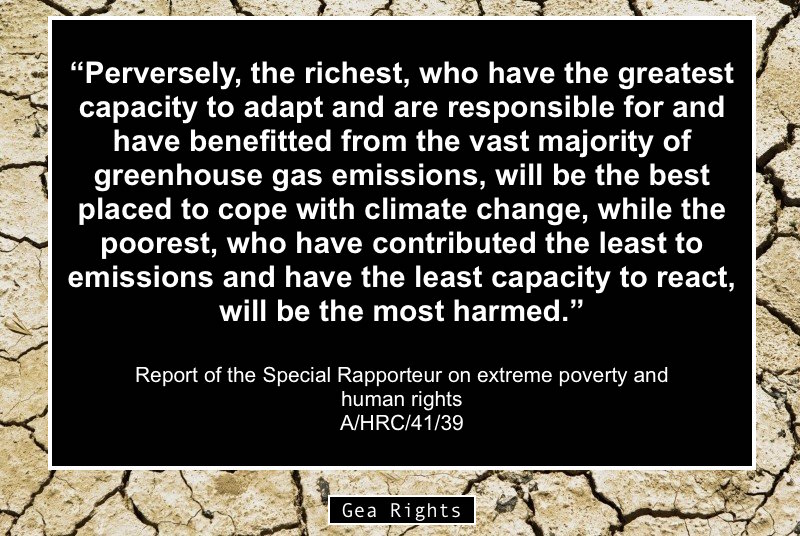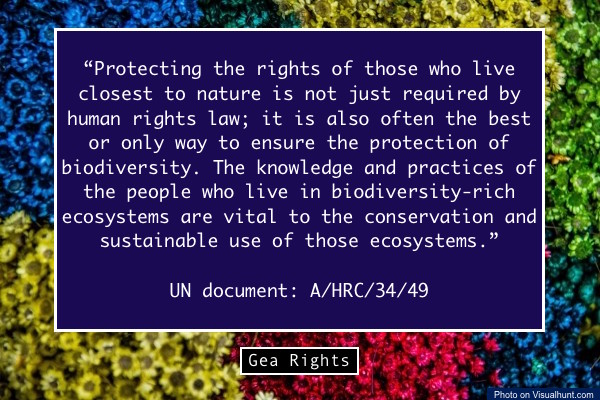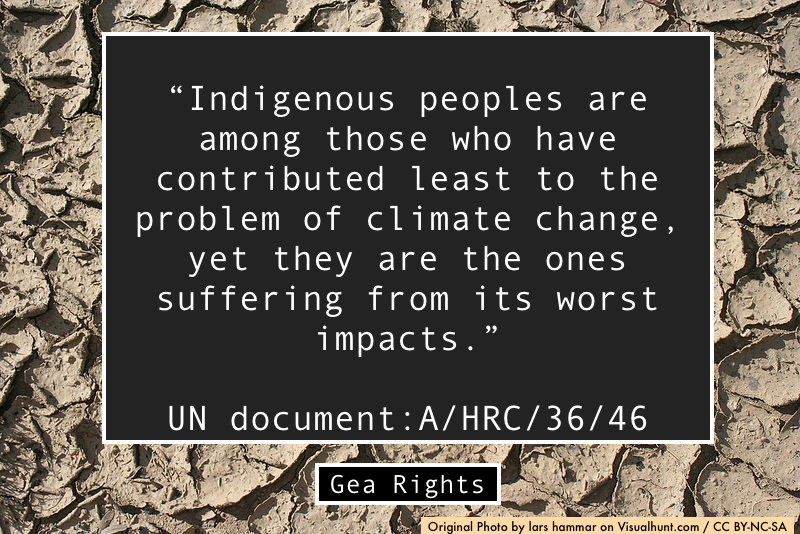The provisions on fair and equitable sharing reflect the polarized nature of the debate and the divergence between the interests of developed and developing States.
During the CBD negotiations, no issue has been as controversial as ABS (i.e. access and benefit sharing). The interpretation of CBD, in fact, reveals that the Parties considered compensation to rebalance equity among the players, in particular to developing countries and indigenous communities.
The use of the words “fair” and “equitable”, adopted in Art. 1 and 15 of the CBD, is not a tautology; the terms have an emphasizing and complementary function, referring both to the process and the outcome of the distribution of benefits deriving from the use of biological resources.
As previously noted, prior to the entry into force of the CBD, access to genetic resources as well as traditional knowledge associated with genetic resources was available at no cost in most of the World. This often led to the exploitation, use and/or monopolization of these resources and knowledge, without sharing any benefit with the resource-providing countries or the holders of knowledge.
When this situation was perceived as inequitable, the CBD introduced the concept of ABS with Article 15, which seeks to balance the interests of users of genetic resources, who wish to obtain continuous access to these resources, with the interests of the providers of those resources, who want to receive an equitable share in the benefits they can derive from its use.
In summary, according to the ABS concept, supplying States should facilitate access to their genetic resources, while user States should share in a fair and equitable way the benefits of access to and use of genetic resources. However, it is important to note that there is not always clear distinction between providers and users, since States are often both the provider and the user at the same time. In addition, the different circumstances and situations surrounding the use of genetic resources make it impossible for each provider State to specify, a priori, what benefits should be shared and what modalities are used to facilitate exchange.
Access to Genetic Resources
Article 15 of the CBD starts by recognizing the sovereignty of the States over their natural resources (confirming the definitive abandonment of the CHM principle) and the authority of their national governments in order to determine the access to genetic resources, which is subjected to national legislation.
The countries of origin of genetic resources are required to facilitate the access to them by other Parties for “environmentally sound uses”, and “not to impose restrictions that run counter to the objectives” of the CBD.
The genetic resources relevant for the application of the ABS rules are limited to those provided by Parties that are countries of origin of such resources or by the Parties that have acquired the genetic resources in accordance with the CBD.
The access must be based on “mutually agreed terms” (MAT), and is subjected to “prior, informed consent” (PIC) of the country providing the resources, “unless otherwise determined by that Party” .
The concept of PIC is based on the principle that before potential users can access genetic resources, those affected and those authorized to make decisions should be informed about potential uses.
However, the exact manner, scope and procedure by which the PIC is to be obtained is governed by national access legislation. It is important to note that Article 15(5) of the CBD states that “unless otherwise determined by that Party”. This means that in exercising their sovereign rights over genetic resources, only Parties will be able to decide whether or not they require PIC for access to their genetic resources, in accordance with the provisions of paragraph 1 of this Article.
Benefits
Although the CBD does not define the term “benefits”, it provides different types of benefits (monetary and non-monetary) to be shared, including:
- Research and development results, Article 15(7);
- Benefits arising out of the commercial and other utilization of genetic resources provided, Article 15(7);
- Access to and transfer of technology using genetic resources, Article 16(3);
- Participation in all kinds of scientific research based on genetic resources, Article 15(6);
- Specific participation in biotechnology research activities based on genetic resources, Article 19(1);
- Priority access to results and benefits derived from the biotechnological use of genetic resources, Article 19(2).
Therefore, participation in the benefits must be based on mutually agreed terms (as indicated in Articles 15(7), 16(3) and 19(2)) and negotiated on a case-by-case basis, in accordance with the legislative, administrative or policy measures adopted by the Parties.
A Clearing-House Mechanism (CHM) is established by Article 18(3) in order to “promote and facilitate technical and scientific cooperation”. Scientific knowledge and technological know-how have a primary role in the implementation of the CBD. However, expertise in managing information and technology varies enormously from country to country. For this reason, the CHM ensures that all governments have access to the information and technologies they need for their work on biodiversity.
Articles 20 and 21 set out the framework of financing agenda under the CBD. Since most of the biological resources are located in developing countries, they cannot bear by themselves the costs of conservation and sustainable use of biodiversity.
Article 20 establishes that each Party has to provide financial support and incentives in respect of national activities aimed at the fulfillment of the CBD objectives; developed countries provide additional financial resources to enable developing countries to meet the agreed costs of implementing measures, in order to achieve the objectives of the CBD and to benefit from its provisions.
Article 21 establishes a mechanism for the provision of financial resources to developing country Parties and its functioning under the authority and guidance of the Conference of the Parties (COP).
The Global Environment Facility (GEF), established on the eve of the 1992 Rio Earth Summit, is designated by Article 39 to operate the financial mechanism of the CBD. It provides financial resources for developing countries and countries with economies in transition to implement the CBD.
According to Aphrodite Smagadi in Analysis of the Objectives of the Convention on Biological Diversity (see below), the analysis of the CBD objectives reveals their interdependency: the realization of one objective depends on one or more of the others.
The theory of intergenerational equity supports the association of sustainability with equity concerns. According to the theory, current generations are intermediaries between past and future generations, having both the right to enjoy the natural and cultural resources left from the previous generation and the obligation to protect and deliver them to the next one in the condition in which they received them.
Sustainability also necessitates equity among stakeholders of the same generation (intragenerational equity), especially in the sharing of the benefits originated from the production of medicines deriving from genetic resources. Unfair and inequitable sharing of the benefits can lead in the short term to inequities among stakeholders of the same generation and, in the long term, it could deprive future generations of access to millions of species and of the benefit of their medicinal qualities, with implications for conservation and sustainability.
Equity, social justice, respect for social self-determination and cultural diversity, maintenance of ecological integrity and conservation must drive research and development of medicines deriving from genetic resources and traditional knowledge, in order to promote global welfare and to support developing countries.
In this view, fair and equitable benefit sharing supports conservation and sustainable use, while promoting development efforts.
Credits:
- A. Smagadi, Analysis of the Objectives of the Convention on Biological Diversity: Their Interrelation and Implementation Guidance for Access and Benefit Sharing, 31 Colum. J. Envtl. L. 243, 2006.
- T. Greiber, S. Peña Moreno et al., in Guía Explicativa del Protocolo de Nagoya sobre Acceso y Participación en los Beneficios, UICN Serie de Política y Derecho Ambiental No. 83, 2013.
- A. Yusuf, International Law and Sustainable Development: the Convention on Biological Diversity, 2 Afr. Y.B. Int’l L. 109, 1994.
- D.French, Sustainable Development and Biological Diversity, in International Economic Law: Critical Concepts in Law, ed. by Asif H. Qureshi and Xuan Gao, Vol. V, Routledge, 2010.
- https://www.thegef.org/topics/biodiversity
- Convention on Biological Diversity
Photo by Mean and Pinchy on Visualhunt.com / CC BY-NC







Leave a Reply